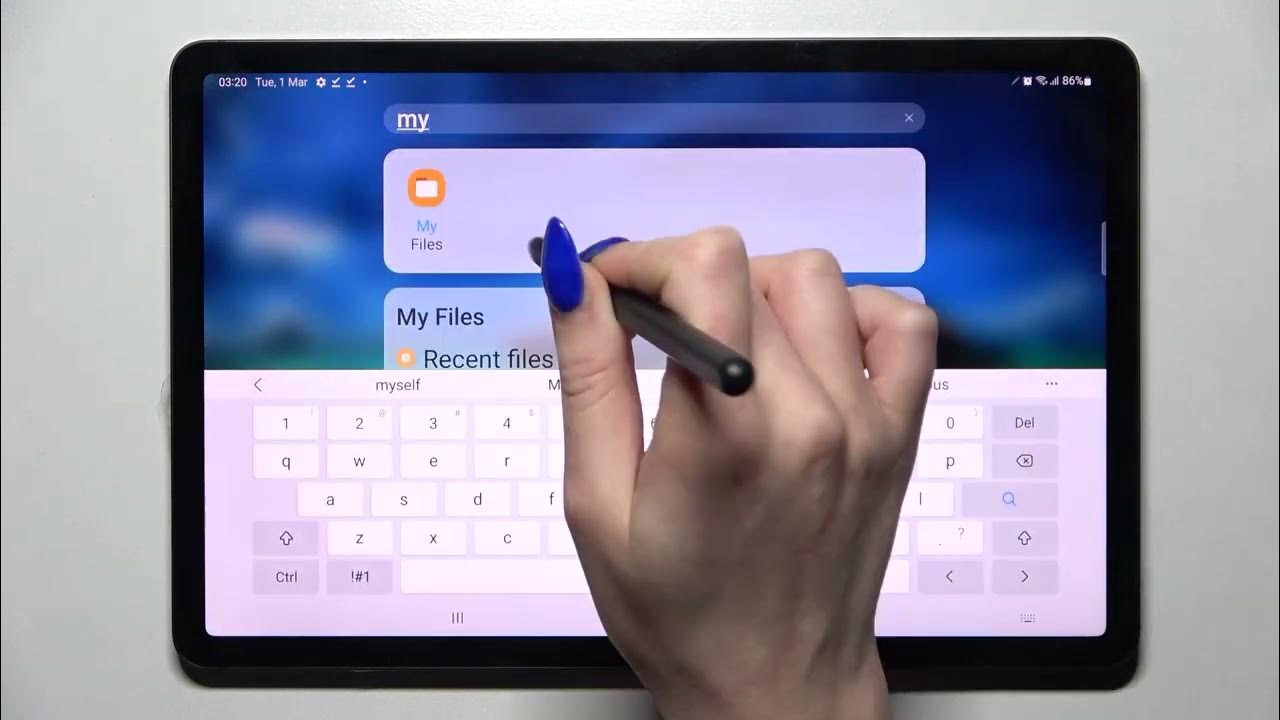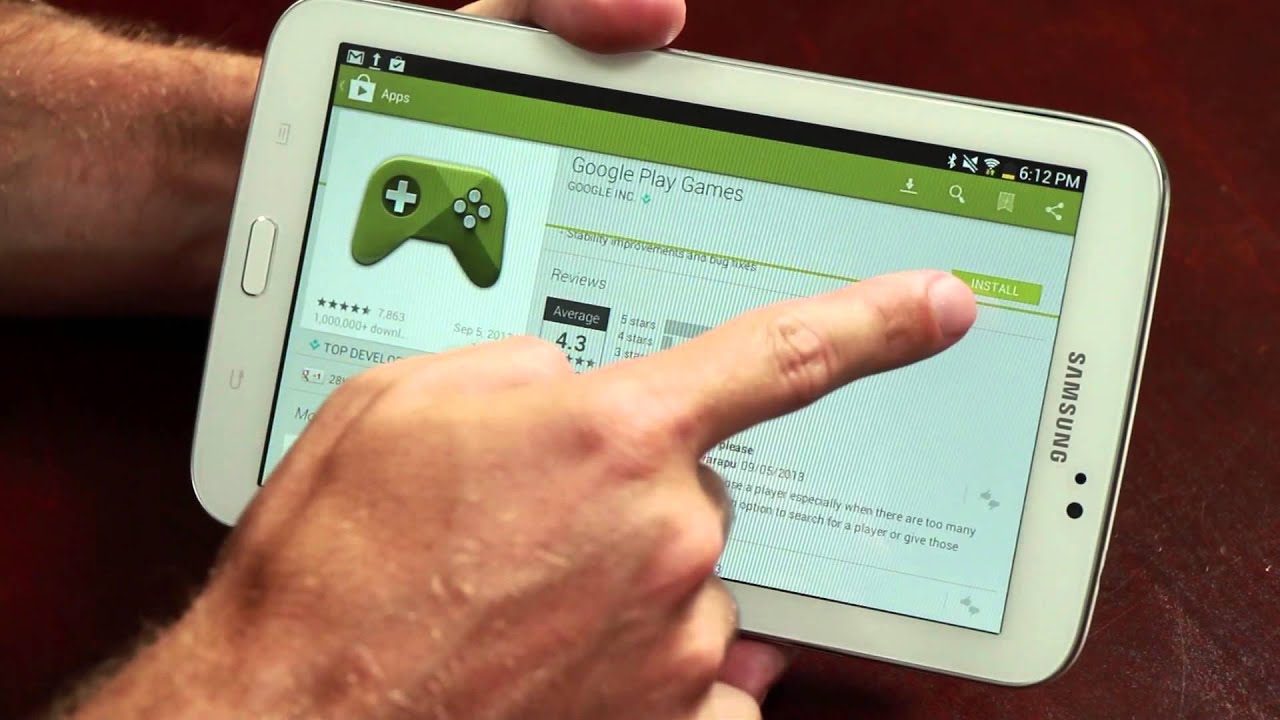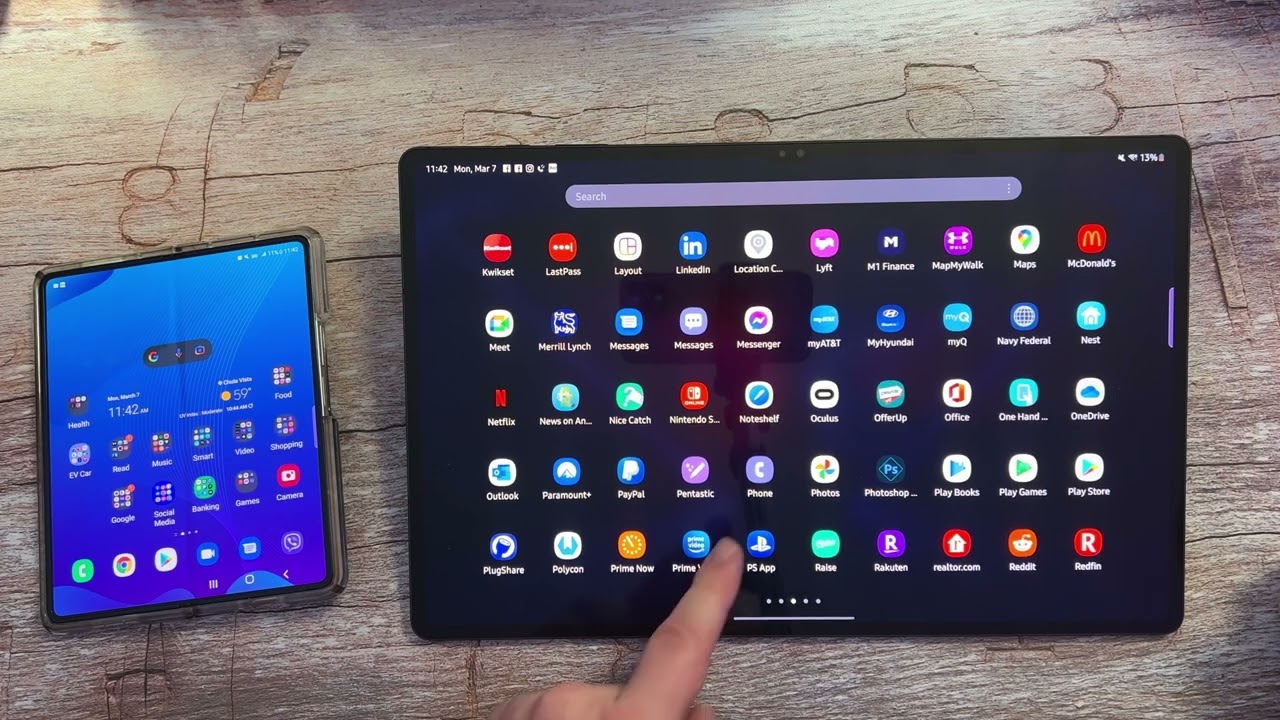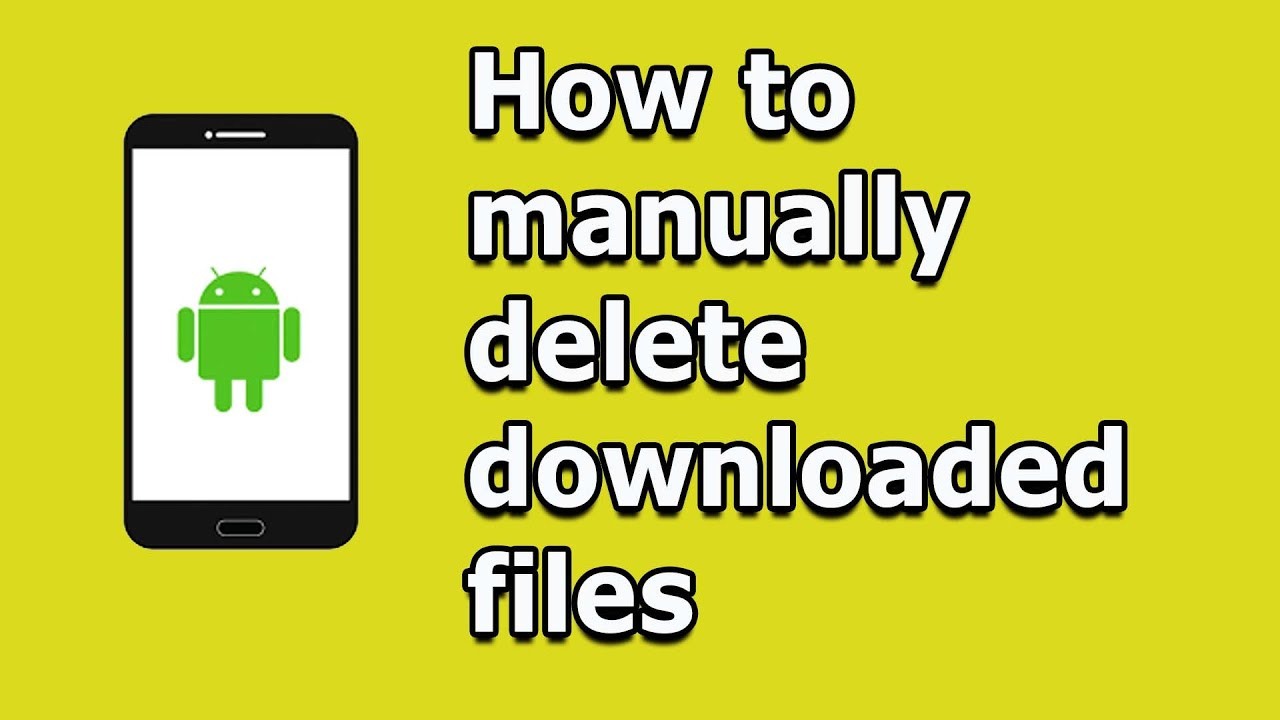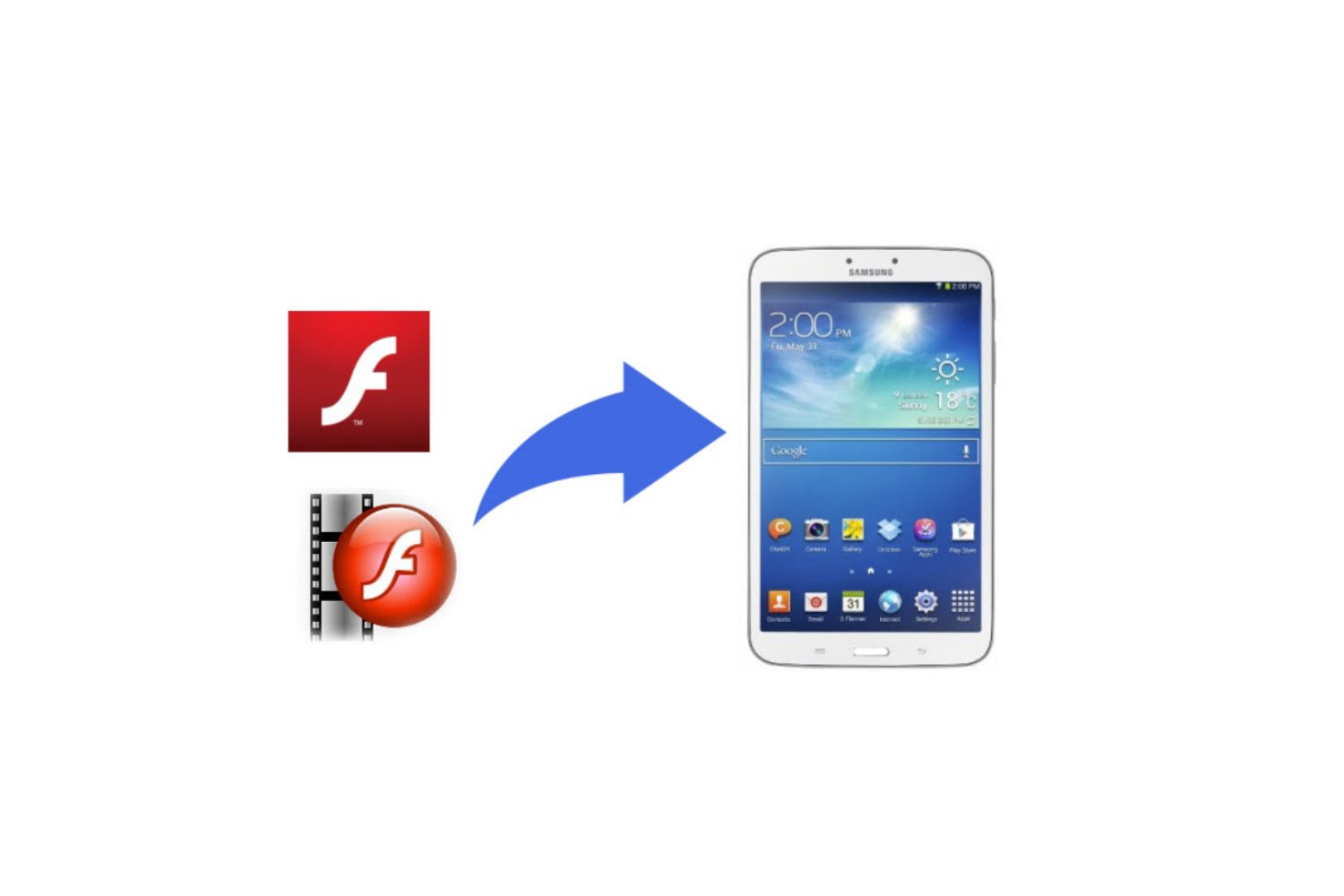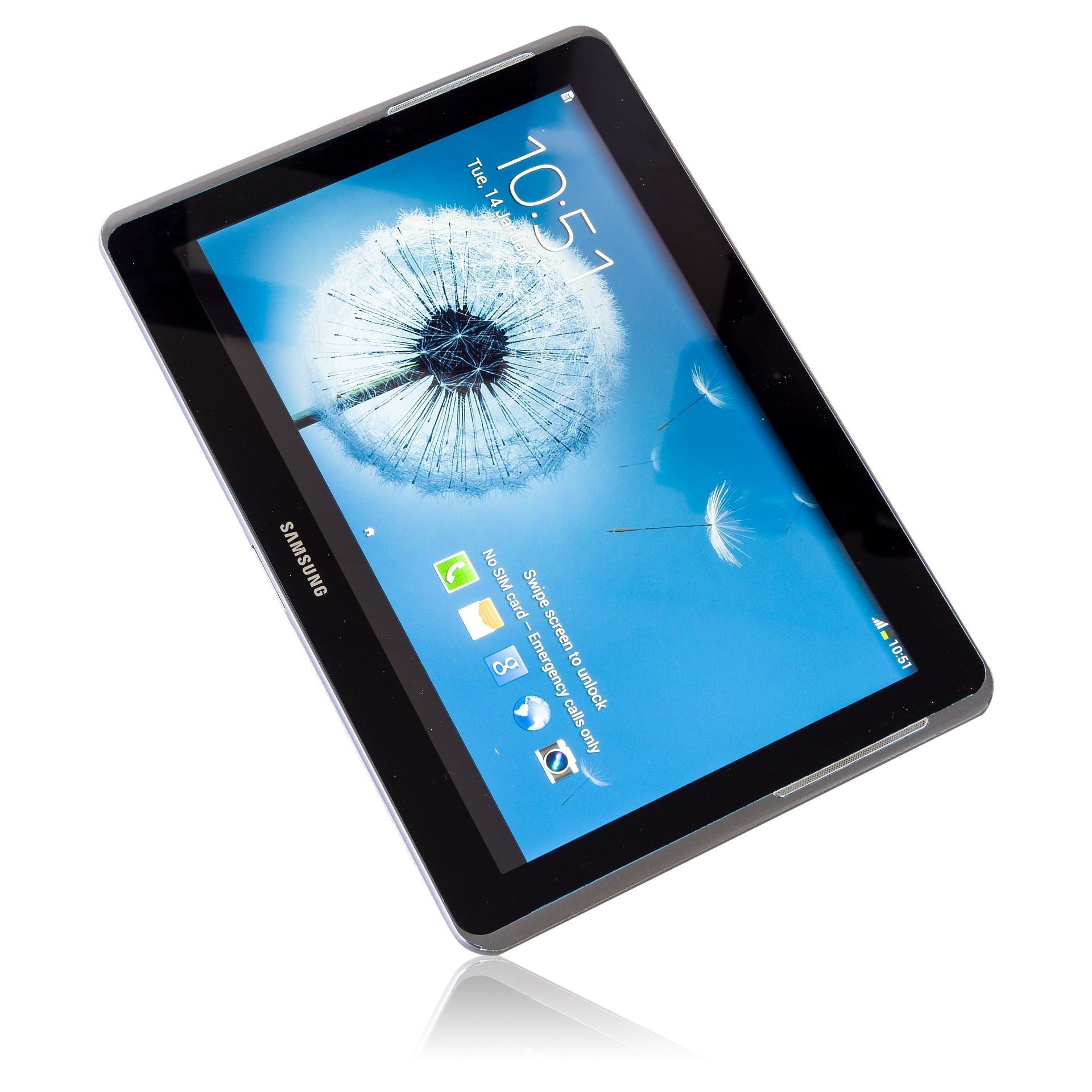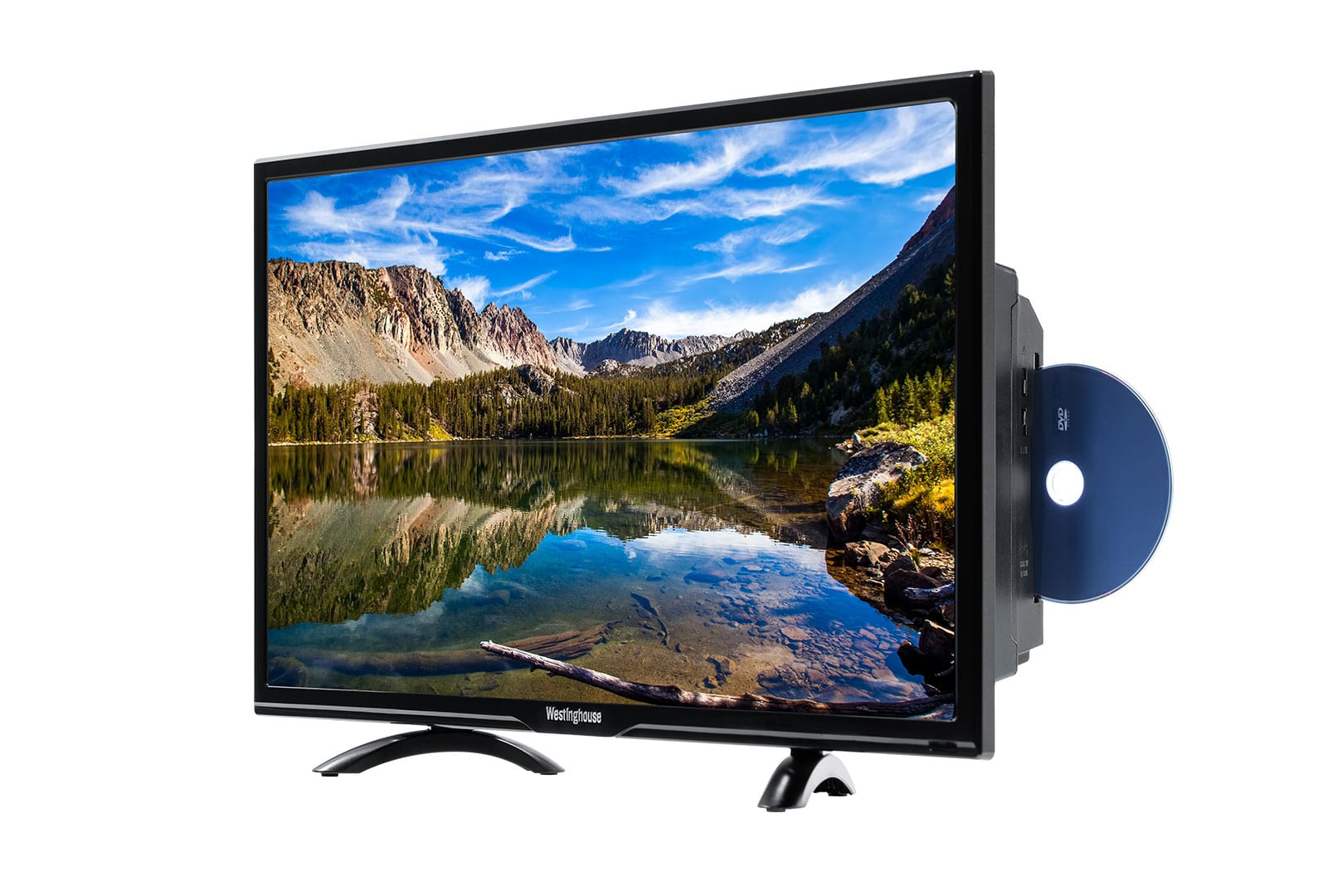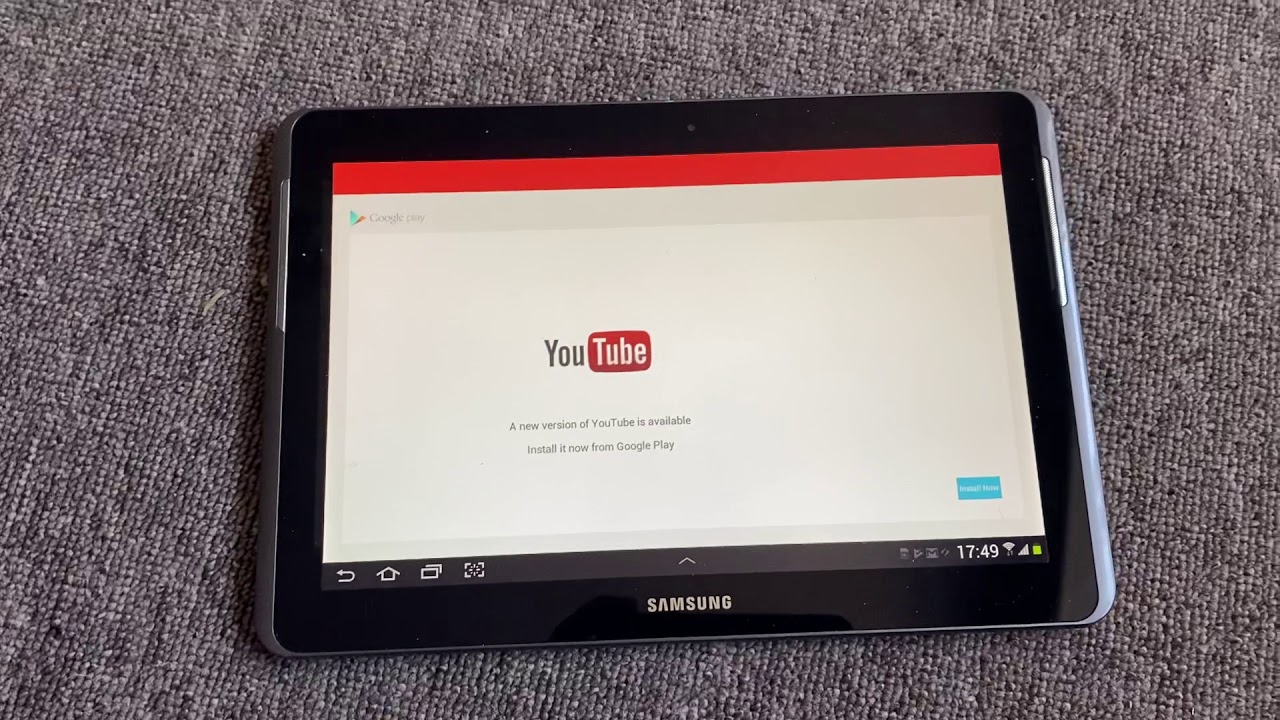Introduction
Welcome to this guide on where downloads are stored on a Samsung tablet. If you are a proud Samsung tablet owner, you may find yourself wondering where all the downloaded files go. Whether it’s a PDF document, a music track, or a video file, understanding the default storage location on your tablet is crucial for managing and accessing your downloads effectively.
Downloading files is a common task for tablet users, whether it’s for work, entertainment, or personal use. However, finding those files after they have been downloaded can sometimes be a challenge. This guide aims to clarify the default storage location for downloads on your Samsung tablet and provide you with practical tips on how to manage and locate your downloaded files efficiently.
Understanding where your downloads are stored is particularly important when you need to find and open specific files quickly. Whether you want to access an important document, share a media file with a friend, or clean up storage space by deleting unnecessary downloads, having a clear understanding of the storage location is crucial.
This guide will walk you through the default storage location for downloads on your Samsung tablet and how to manage your downloads effectively. We will also explore how to change the default storage location, view downloaded files through the file manager app, and clear up storage space by deleting unwanted downloads.
By the end of this guide, you will have a comprehensive understanding of where your downloads are stored on your Samsung tablet and how to navigate and manage them with ease.
Default Storage Location on Samsung Tablet
By default, when you download files on your Samsung tablet, they are stored in the internal storage of the device. The internal storage is the built-in memory of your tablet, which is separate from any external SD card or other storage options you may have.
The exact location where downloads are stored may vary slightly depending on the specific model and version of your Samsung tablet, but generally, they can be found in the “Downloads” folder. This folder is usually located in the “My Files” or “File Manager” app.
To access the default storage location, follow these simple steps:
- Open the “Apps” menu on your Samsung tablet by either swiping up from the home screen or tapping on the “Apps” icon located at the bottom of the screen.
- Locate the “My Files” or “File Manager” app and tap on it to open it.
- Once inside the “My Files” or “File Manager” app, you should see various storage options. Look for the “Downloads” folder and tap on it to open it.
Inside the “Downloads” folder, you will find all your downloaded files. They can be sorted by date, file type, or other criteria depending on the file manager app you are using. You can also perform actions such as copying, moving, or deleting files directly from within the app.
It is worth noting that the default storage location is internal storage, which means the available space is limited. If your tablet has limited internal storage, you may want to consider changing the default storage location or regularly clearing out unnecessary downloads to free up space for new files.
Now that you know the default storage location for downloads on your Samsung tablet, let’s explore how to manage your downloads effectively using the Downloads app.
Using the Downloads App to Manage Downloads
The Downloads app is a built-in application on Samsung tablets that allows you to conveniently manage and organize your downloaded files. It provides a user-friendly interface where you can easily browse, locate, and perform various actions on your downloaded files.
To access and use the Downloads app, follow these steps:
- Open the “Apps” menu on your Samsung tablet and locate the “Downloads” app. It is usually represented by an arrow pointing downwards or a folder icon with a downward arrow.
- Tap on the “Downloads” app to open it.
Once inside the Downloads app, you will see a list of all your downloaded files, arranged in chronological order with the latest downloads appearing at the top. Each file is accompanied by its respective name, size, and download date.
To perform actions on your downloaded files, you can use the following options available in the Downloads app:
- Open: Tap on a file to open it directly in the associated application. For example, tapping on a downloaded PDF document will open it in a PDF reader app.
- Delete: If you want to remove a downloaded file from your tablet to free up storage space, simply select the file by tapping and holding it, then tap on the delete icon or the trash bin icon. Confirm the deletion when prompted.
- Share: The Downloads app also allows you to easily share your downloaded files with others. Simply select the file you want to share, tap on the share icon (usually represented by three connected dots or an arrow pointing outwards), and choose the desired sharing method, such as email, messaging apps, or cloud storage services.
- Sort and Filter: Depending on the version of the Downloads app on your Samsung tablet, you may have options to sort and filter downloaded files. Look for icons or menus that allow you to sort files by name, size, or date, or filter files by file type.
Using the Downloads app, you can easily manage your downloads, access them quickly, and perform various actions to organize your files. However, if you prefer to view and access your downloaded files through the native File Manager app on your Samsung tablet, continue reading the next section.
Finding and Opening Downloaded Files
Locating and opening downloaded files on your Samsung tablet is a straightforward process. Whether you want to open a PDF document, listen to a music track, or watch a video, there are multiple ways to access and open your downloaded files.
Here are some methods to find and open your downloaded files on a Samsung tablet:
- Using the Downloads App: As mentioned earlier, the Downloads app on your Samsung tablet provides a centralized location for all your downloaded files. Open the app, and you will see a list of your downloads. Tap on the file you wish to open, and it will automatically launch in the associated application. For example, tapping on a downloaded PDF will open it in a PDF reader app, while tapping on an MP3 file will launch the music player app.
- File Manager App: Apart from the Downloads app, you can also access your downloaded files through the File Manager app on your Samsung tablet. Open the File Manager app (often named “My Files” or “File Manager”), and navigate to the “Downloads” folder. In this folder, you will find all your downloaded files. Tap on the file you want to open, and it will open in the appropriate application.
- Search Function: If you are having trouble locating a specific downloaded file, you can utilize the search function on your Samsung tablet. From the home screen or app drawer, swipe down to access the search bar and enter the name or type of the file you are looking for. The search results will display the relevant files, and you can tap on the desired file to open it.
- Notification Panel: When you download a file on your Samsung tablet, it is common for a notification to appear in the notification panel. Swipe down from the top of the screen to access the notification panel, and you may find a quick link to the downloaded file. Tap on the link to open the file directly.
By following these methods, you can easily locate and open your downloaded files on your Samsung tablet. Whether you prefer using the dedicated Downloads app, the File Manager app, the search function, or the notification panel, finding and accessing your files should be a seamless experience.
Changing the Default Storage Location for Downloads
If you find that the default storage location for downloads on your Samsung tablet is running out of space or not convenient for your needs, you have the option to change it. By changing the default storage location, you can ensure that downloaded files are saved to a different location, such as an external SD card or a cloud storage service.
Here’s how you can change the default storage location for downloads on your Samsung tablet:
- Open the Settings: Start by accessing the Settings app on your tablet. You can usually find it in the Apps menu or by swiping down from the top of the screen and tapping the gear icon.
- Navigate to Storage Settings: Once in the Settings app, scroll down or search for “Storage” or “Storage Settings”. Tap on it to open the storage options for your device.
- Choose Default Storage Location: Look for an option called “Default Storage Location”, “Default Download Location”, or something similar. Tap on this option to see the available choices.
- Select SD Card or Cloud Service: Depending on the model and Android version of your Samsung tablet, you may have the option to choose either the external SD card or a cloud storage service as the default storage location for downloads. If you have an SD card inserted into your tablet, and it is recognized by the device, you can select the SD card as the default location. Alternatively, if you have a cloud storage app installed (such as Google Drive or Dropbox), you may be able to select the cloud service as the default location.
- Confirm the Changes: Once you’ve made your selection, confirm the changes by tapping on the “OK” or “Select” button. Your Samsung tablet will update the default storage location, and any future downloads will be saved to the new location.
It’s important to note that not all Samsung tablets have the option to change the default storage location for downloads. The availability of this feature may depend on the specific model and Android version of your device.
By changing the default storage location for your downloads, you can ensure that files are saved to a location of your choice, providing you with more flexibility and control over your storage space.
Viewing Downloaded Files through the File Manager App
If you prefer to manage your downloaded files outside of the dedicated Downloads app on your Samsung tablet, you can use the built-in File Manager app. The File Manager app provides a comprehensive overview of all the files and folders on your device, including downloaded files.
Here’s how you can view your downloaded files through the File Manager app:
- Open the File Manager App: Locate and open the File Manager app on your Samsung tablet. The app is typically labeled as “My Files” or “File Manager” and can be found in the Apps menu or on the home screen.
- Navigate to the Downloads Folder: Once inside the File Manager app, you will see a list of folders and files on your tablet. Look for the “Downloads” folder and tap on it to open it.
- Browse and Access your Downloads: Inside the Downloads folder, you will find all your downloaded files. They can be sorted by name, file type, or date modified, depending on the file manager app’s features. Scroll through the list to find the file you wish to view, and tap on it to open it in the associated application.
The File Manager app offers additional options for managing your downloaded files. You can perform actions such as copying, moving, renaming, or deleting files directly from within the File Manager app. This provides you with more control and flexibility in organizing your files.
Furthermore, the File Manager app allows you to navigate through other folders on your Samsung tablet and access files in various locations, including external SD cards, internal storage, and cloud storage services if they are connected to your device.
Browsing and managing your downloaded files through the File Manager app can be a convenient alternative to using the Downloads app. It provides you with a comprehensive view of your files and gives you more flexibility in managing and organizing your downloads.
Clearing up Storage Space by Deleting Downloads
Over time, downloaded files can accumulate and take up valuable storage space on your Samsung tablet. Clearing up storage space by deleting unnecessary downloads is a practical way to free up space for new files and ensure optimal device performance. Here’s how you can delete downloads on your Samsung tablet:
- Open the Downloads App: Begin by opening the Downloads app on your Samsung tablet. This app is specifically designed to manage your downloaded files.
- Select the Files to Delete: Scroll through the list of downloads and identify the files that you no longer need. To select multiple files for deletion, tap and hold on a file, then continue selecting additional files by tapping on them. You can also select all files by tapping the checkbox or the “Select All” option, depending on the version of the app.
- Delete the Files: Once you have selected the files you wish to delete, look for the delete or trash bin icon within the Downloads app. Tap on this icon to delete the selected files. Confirm the deletion if prompted.
Alternatively, you can also use the file manager app on your Samsung tablet to delete downloaded files:
- Open the File Manager App: Locate and open the file manager app on your Samsung tablet, typically labeled as “My Files” or “File Manager”.
- Navigate to the Downloads Folder: Within the file manager app, browse through the folders until you find the “Downloads” folder. Tap on it to access your downloaded files.
- Choose the Files to Delete: Browse through the files in the Downloads folder and select the ones you want to delete. You can tap and hold on a file to enable selection mode, then tap on additional files you wish to delete.
- Delete the Files: Once you have selected the files, look for the delete or trash bin icon in the file manager app. Tap on it to delete the selected files. Confirm the deletion if prompted.
By regularly deleting unnecessary downloads, you can optimize the storage space on your Samsung tablet and ensure that it is used for the files that matter most to you. It’s a good practice to review your downloads periodically and remove any files that are no longer needed.
Remember to exercise caution when deleting files, as the deletion process is irreversible. Always double-check the files you are deleting to avoid accidentally removing important or valuable content.
Conclusion
Managing and accessing downloaded files on your Samsung tablet is essential for maximizing productivity and enjoyment. Understanding where your downloads are stored and how to efficiently manage them can make a significant difference in your tablet usage experience.
In this guide, we explored the default storage location for downloads on a Samsung tablet, which is usually the “Downloads” folder located in the internal storage. We also learned how to use the Downloads app to manage and organize downloads, as well as how to find and open downloaded files through the Downloads app or the File Manager app.
Additionally, we discussed the option of changing the default storage location for downloads, giving you the flexibility to save files to an external SD card or a cloud storage service. This can help you optimize your device’s storage space and ensure that downloads are stored in a location that suits your needs.
Lastly, we explored the importance of clearing up storage space by deleting unnecessary downloads. Regularly reviewing your downloaded files and removing those that are no longer needed can free up valuable storage space and improve the overall performance of your Samsung tablet.
By following the tips and techniques outlined in this guide, you can effectively manage your downloaded files, access them with ease, and maintain a clutter-free storage space on your Samsung tablet.
Remember to stay organized, regularly review and delete unnecessary downloads, and adapt the storage location settings to suit your preferences. With these practices in place, you can make the most of your Samsung tablet’s capabilities and enjoy a smooth and efficient user experience.







